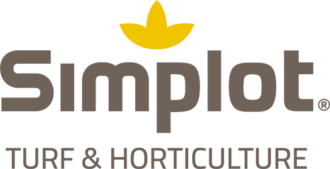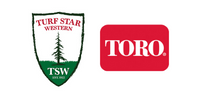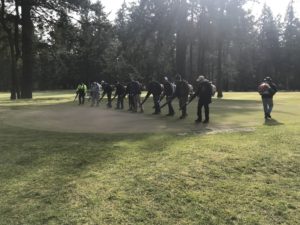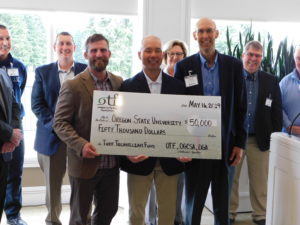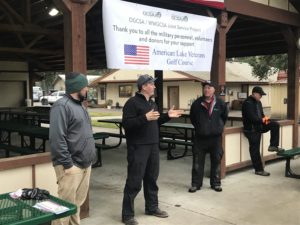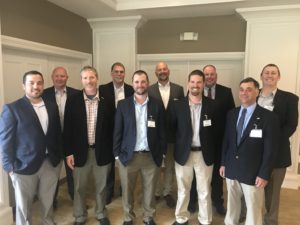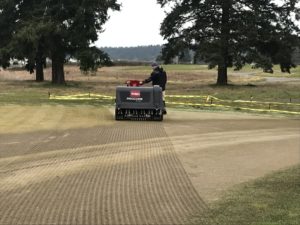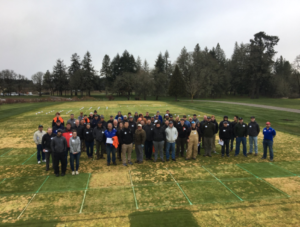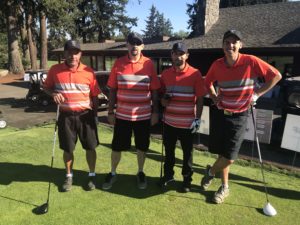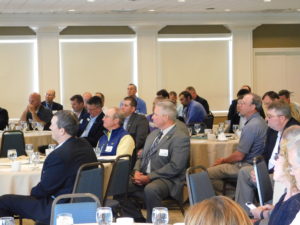President’s Message – December 2017
“Whiskey is for drinking and water is for fighting.” – Mark Twain
This year the Oregon Golf Course Superintendents Association (OGCSA) Board of Directors has chosen to take on a new challenge by establishing “Oregon/Washington Golf Course Best Management Practices” (BMP). For me this is a new project, but for the OGCSA it is not as we are following in our predecessor’s foot steps. In 2000 the association was ahead of the curve and created the “Environmental Stewardship Guidelines” due to mounting pressures outside golf, political and environmental.
The “Environmental Stewardship Guidelines” received national recognition from the Golf Course Superintendents Association of America (GCSAA) as the recipient of the 2004 President’s Environmental Stewardship Award. The Second Edition of the Guidelines is much more comprehensive, written in 2009 and published in 2010. This effort was in partnership with the Western Washington Golf Course Superintendents Association (WWGCSA) and the Northwest Turfgrass Association (NTA) to promote environmental stewardship and a commitment to golf course management in a manner that protects and enhances the environment.
Though our roots are in the Northwest much of these latest efforts start back East. Places like the Chesapeake Bay and the Gulf of Mexico where they have been experiencing nutrient loading and environmental damage. The state of Florida did not have preemption for fertilizer, this resulted in local jurisdictions passing fertilizer restrictions and total bans certain times of year. BMP became an important platform for advocacy, education, recognition and a demonstration of professional land management.
In 2015 the United States Golf Association (USGA) provided funding to the GCSAA through the Environmental Institute for Golf (EIFG) to develop the “BMP Planning Guide and Template”. This tool is an online database based on the experience of our predecessors by providing information on getting started and carrying out key processes. All the steps, processes, developed programs, and regulatory documents are stored in the template available for updates and facility adoption. One of the objects of the tool is to provide a starting point to save money and resources. Individual golf courses can then access the state template and create BMP for their facility.
These are to be guidelines (not rules or laws) to help individual facilities with information to assist in the development of policies for recourse conservation. No two golf courses are alike so the intent is not to make a “one size fits all” document, but one that is adaptable for individual golf facilities. It is also the intent not to burden golf facilities but provide a document that can potentially improve the financial sustainability of the golf course.
It is the goal of the GCSAA to have BMP for all 50 states by 2020. Besides providing the “BMP Planning Guide and Template” the GCSAA is providing chapter grants to help state associations off set the financial cost. This time we are partnering with WWGCSA and the Inland Empire Golf Course Superintendents Association (IEGCSA) to share the work load. Golf courses make up only a small percentage of turf and grassy areas in the United States. Golf course BMP can be a tool used by parks, athletic fields, lawns, gardens and any other plant based area. Golf courses should be seen as leaders for establishing proven Best Management Practices.
Our Annual Pest Management Seminar, held early in December, had an increase in participation and has always been one of our biggest events. After several years of decreasing attendance, this year we had a significant increase. We think this is the value seen in having significant industry speakers. The Pest Management Seminar committee is meeting in early January to start planning next year’s seminar as to achieve the same quality. We received some important feedback from the questionnaires at the seminar that will help us as we move forward in this planning process. Surveys are an important tool that give us guidance on how to serve the membership better. In January the OGCSA will be sending out a member needs survey. It is the objective of the association to serve its members and provide value for your membership. Please give us the feedback so we can respond to your questions and concerns.
Respectfully,
Chuck Wolsborn




